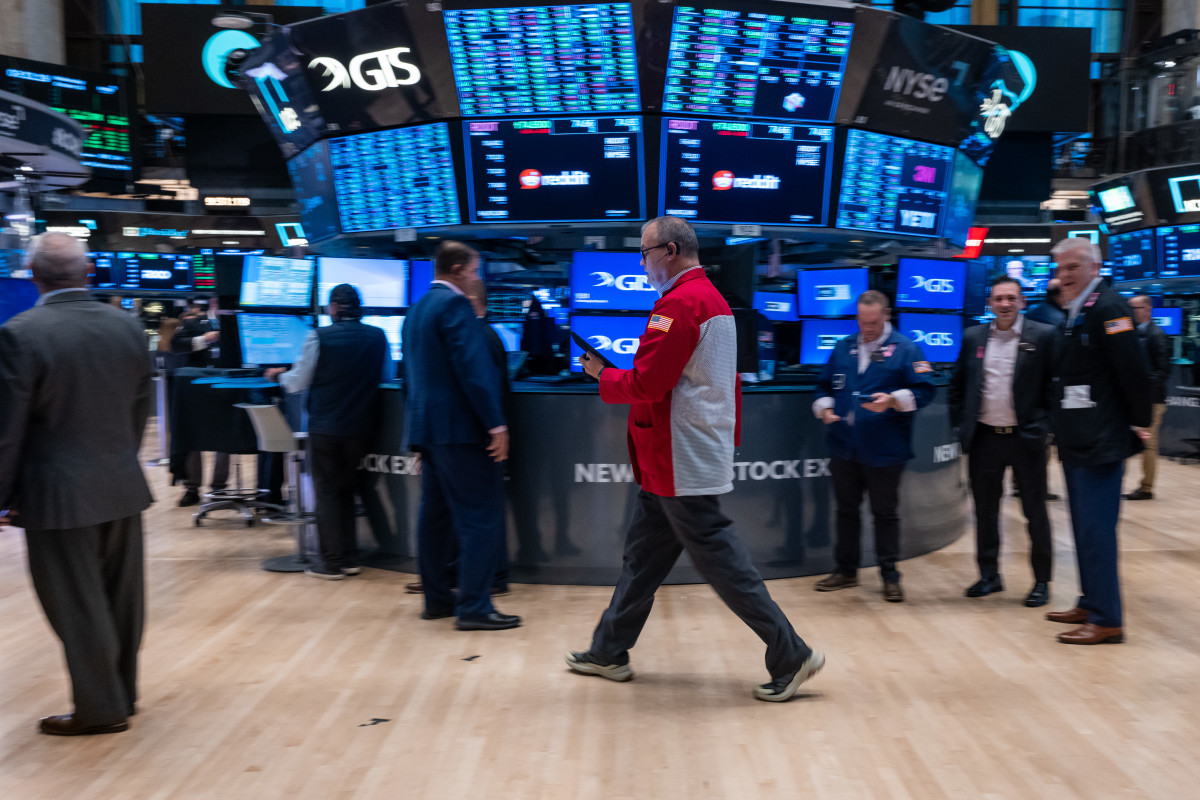
Stocks have paused since Monday, when the S&P 500 index hit its 46th record close this year. The index has almost doubled in this two-year bull market.
Strong earnings, resilient economic growth, falling inflation and anticipation of more interest rate cuts by the Federal Reserve have sent the market higher in recent weeks.
🐂 Free Newsletter From TheStreet - TheStreet 🐻
As for profits, analysts project S&P 500 earnings rose 4.1% in the third quarter, according to FactSet. While that’s down from 11.3% in the second quarter, it’s still a strong number.

As for the economy, it grew an annualized 3% in the second quarter. And the Atlanta Federal Reserve Bank’s forecasting model calls for 3.2% in the third quarter.
The September jobs report bolstered equity bulls, showing that nonfarm payrolls rose 254,000 in September, up from 159,000 in August. And the unemployment rate dipped to 4.1% from 4.2%.
Related: Retail sales report tests Fed interest rate cut bets
After the data, David Kostin, chief equity strategist for Goldman Sachs, lifted his year-end S&P 500 target to 6,000 points from a prior forecast of 5,600. The 6,000 level would represent a 3% climb for the index from Wednesday’s level of 5,829.
"The [macroeconomic] backdrop remains conducive to modest profit-margin expansion," he wrote in a commentary.
Inflation and the Fed policy outlook
On the inflation front, consumer prices rose 2.4% in the 12 months through September. While that figure slightly exceeded economists’ forecasts, it’s down from 2.6% in August.
Related: Legendary investor unveils updated stock picks
The Fed has a 2% target for inflation. And its favored inflation indicator, the Personal Consumption Expenditures Price Index, was very close to that mark in August – 2.2% year on year.
The central bank slashed interest rates by 0.5 percentage point last month, and many experts say tame inflation will spur more reductions.
Interest-rate futures indicate a 94% chance the Fed will lower rates by a quarter-point at its next meeting in November, according to CME FedWatch. The remaining 6% goes to no action.
Stock bears, on the other hand, say the market is overvalued. As of Oct. 4, the S&P 500 traded at 21.4 times analysts’ earnings estimates for the next 12 months, FactSet says. That’s well above the five-year average of 19.5 and the 10-year average of 18.
Stifel analyst is negative on stocks
One expert who plants himself firmly in the bearish camp is Barry Bannister, chief equity strategist at Stifel, a top securities firm.
Related: Veteran fund manager bluntly says why popular stock forecast is wrong
“We took a clean-sheet look at the equity market and came away with the same shaking-my-head emoji reaction,” he wrote in a commentary.
“Despite all the soft-landing and Fed rate cut optimism, the S&P 500, up almost 40% year-on-year, has simply overshot.” A soft landing means falling inflation without an economic downturn.
You can cherry-pick, applying the most overvalued cyclically adjusted valuation level of the past 35 years to show about 10% further upside for the stock market, Bannister said.
A 26% drop is possible for stocks
“But that same analysis of a century of manias also returns the S&P 500 in 2025 to where 2024 began, down 26% from that prospective peak.” The S&P 500 began 2024 at 4,609.
Expert Stock Picks:
- Veteran investment strategist puts 3 top stocks in focus
- $4 billion fund manager puts 3 top stocks in focus
- $7 billion fund manager chooses Amazon and other growth stocks
The premium of growth-stock returns over value-stock returns is now almost exactly the same as in 1939 amid the Great Depression, he said.
“The three-generation round-trip implies that the 100-year flood of growth’s premium over value has topped,” Bannister said.
“Populism is [every]where and always a big spender, an enemy of depression and a close ally of reflationary recovery and value. … No matter who wins [the presidential election] next month, we are of the view that populism has already won.”
Related: Veteran fund manager sees world of pain coming for stocks







